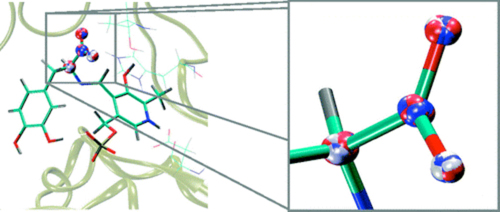

Main navigation | Main content
03/02/2011
Recent research from the research group of Professor Jiali Gao
Kinetic isotope effects provide the most direct probe of the transition state of enzymatic reactions; however, theoretical techniques developed for gas-phase reactions are not directly applicable to biological processes because statistical mechanical sampling of the dynamic fluctuations of the system is important and necessary. A method based on Feynman path integral simulation, coupled with free energy perturbation theory and umbrella sampling (PI-FEP/UM), has been developed by former Postdoctoral Associate Dan Major, Ph.D., in Professor Jiali Gao's group. In this method, the KIEs of condensed phase reactions, including enzymatic reactions, are determined directly by computing the ratio of the quantum partition functions of different isotopic processes in one single simulation. Therefore, this method avoids the essentially insurmountable difficulty encountered in the past, which is to take the difference of two separate simulations, one for each isotopic reaction, whose statistical fluctuations are as large as or greater than the difference itself in KIE calculations. The method has been validated on a variety of reactions in solution and in enzymes.
The challenge to theory is to make predictions before experimental studies have been carried out. In a recent study, which was featured online in the Journal of the American Chemical Society, graduate student Yen-lin Lin of the Scientific Computation graduate program applied the PI-FEP/UM method to the enzymatic conversion of L-dopa into dopamine, which is involved in the treatment of Parkinson's disease. The dynamic simulations yield the primary C-13 KIEs and the secondary deuterium KIEs associated with the catalyzed reaction as well as the uncatalyzed process in aqueous solution. Whereas the computational study provided a deeper understanding of the mechanism of the enzymatic decarboxylation, the researchers are looking forward to the experimental test of their quantitative predictions.
